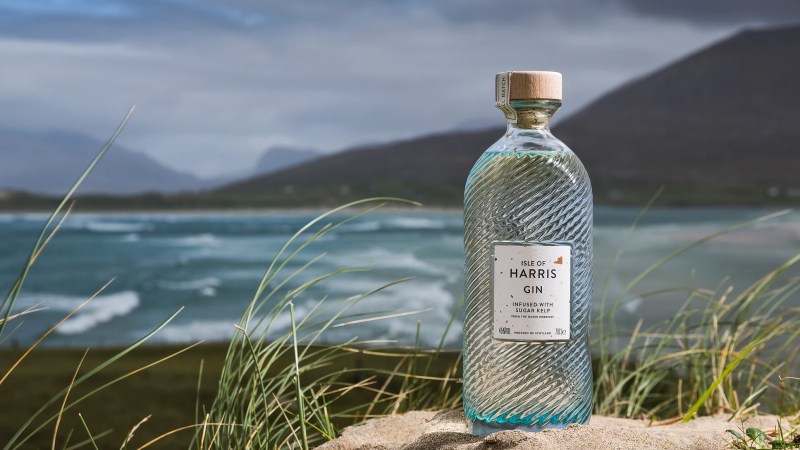
Editor’s Note: Last November we had the pleasure of spending 10 captivating days in Scotland. Below is but one adventure of many from our stay. We hope the joy we experienced comes through in all our posts and missives from our adventure, which no doubt read better with a wee dram in hand.
Located in the village Tarbert on its namesake island (located Northwest of the mainland Scotland, around 300 miles from Edinburgh), Isle of Harris Distillers is the first distillery on the island.
Nicknamed “The Social Distillery” because of the founder (and musicologist) Anderson Bakewell’s hopes to make the distillery bastion of community on the island for generations to come, Isle of Harris opened in October 2015 after seven years of planning and construction.
Their flagship product at the moment is their Isle of Harris Gin, but they’ve already got Scotch whisky in barrels, which they are hoping to release in 2018. The Scotch, which is named The Hearach, the Gaelic word for an inhabitant of Harris, is being produced at a rate of around 300,000 bottles per year. The first run will only feature 1,916 bottles, which corresponds with the number of residents on the island.

You may not be able to get your hands on the Scotch yet, but it is possible to try the gin, which is made by the distillery’s five distillers using nine botanicals—Juniper, Coriander, Angelica Root, Orris Root, Cubebs, Bitter Orange Peel, Licorice and Cassia Bark. The ninth ingredient, and the one that makes their gin stand out, is sugar kelp. Yes, you heard right. Kelp, as in seaweed. The sugar kelp used at Isle of Harris grows in the waters around the Outer Hebrides and is hand-harvested by a local diver by the name of Lewis Mackenzie.
[Let’s take a moment to realize that this distillery basically has its own personal diver to harvest an ingredient. From the ocean. In a part of the world where the water is anything but tropical. Think about that next time you complain about having to go out to pick up your takeout Chinese food.]

The sea kelp is said to give their gin a distinctive coastal taste, a nod to the maritime influence on the island and its residents. These ingredients come together in the distillery’s small copper still, known as “The Dottach” to create the gin.
On the nose, the gin is juniper and pine, followed by citrus—in this case, orange, lime, and grapefruit. There’s also a distinct coastal note that comes from the sea kelp. On the palate, you’re going to find a balance of juniper and citrus fruits again, underpinned by an herbaceous quality from the kelp. Smooth and dry, it has a long and fairly clean finish.

The ideal way to serve Isle of Harris Gin, according to the distillery, is the Harris Serve:
- 50ml (a little more than 1.5 oz) Isle of Harris Gin
- 3-4 drops of Sugar Kelp Aromatic Water
- Walter Gregor’s Scottish Tonic with Quinine
- Ice
- Red or Pink Grapefruit
Method: Add gin, aromatic water, and tonic to glass with ice. Sitr and top with slice of grapefruit.
If you’re like us, you’re already salivating for the Scotch whiskey to come out, but the Harris Serve is a hell of a way to pass the time.




